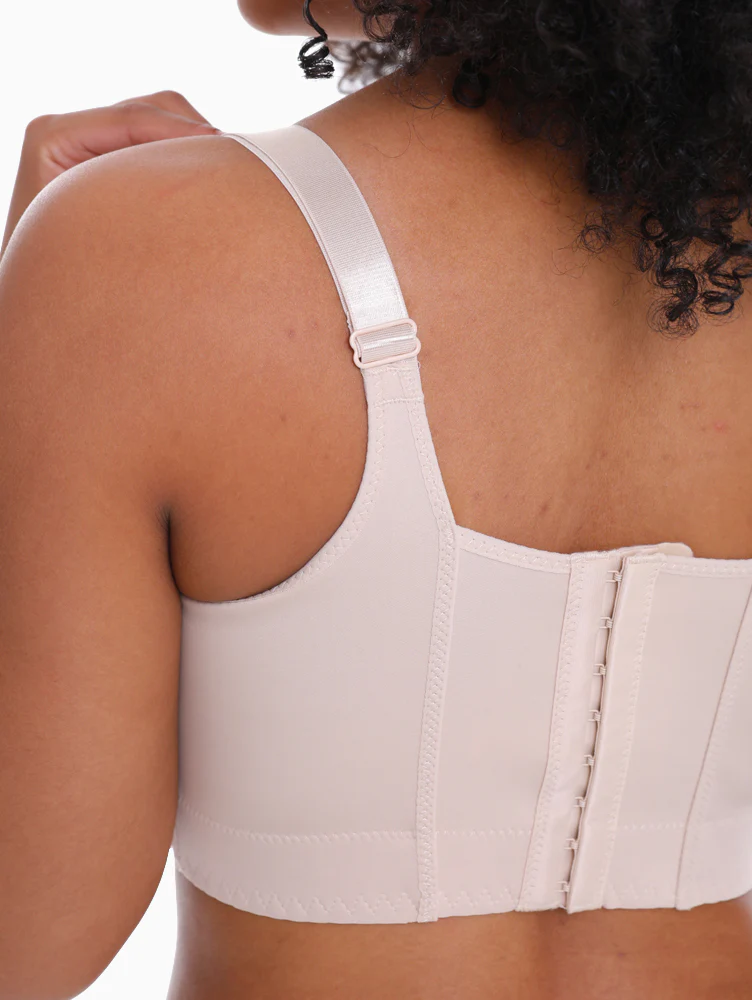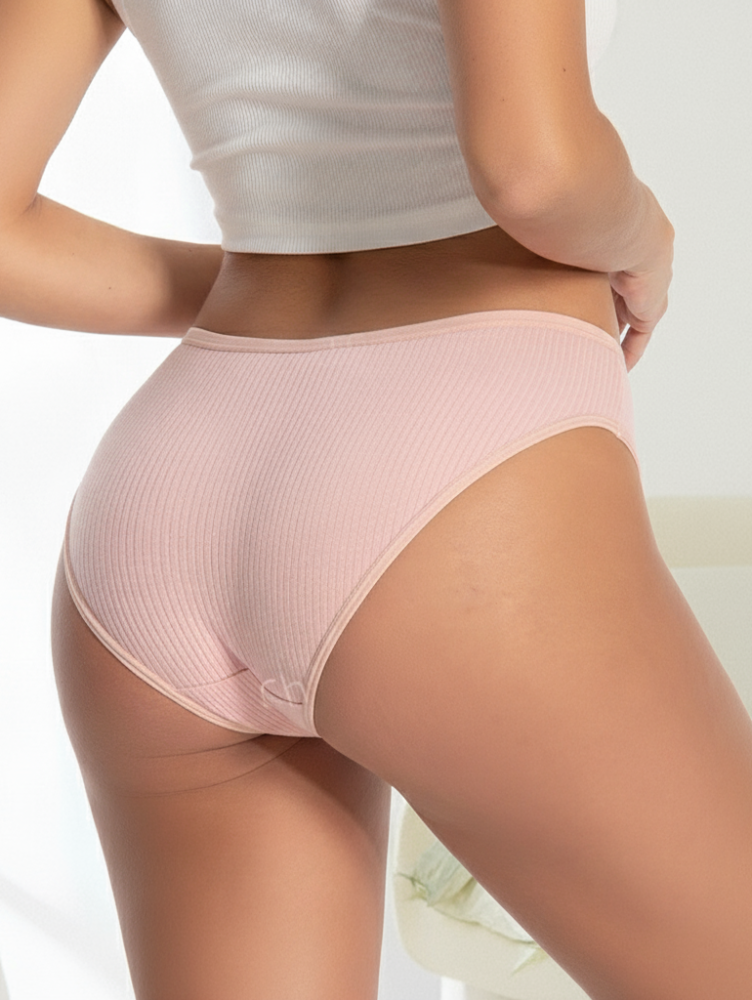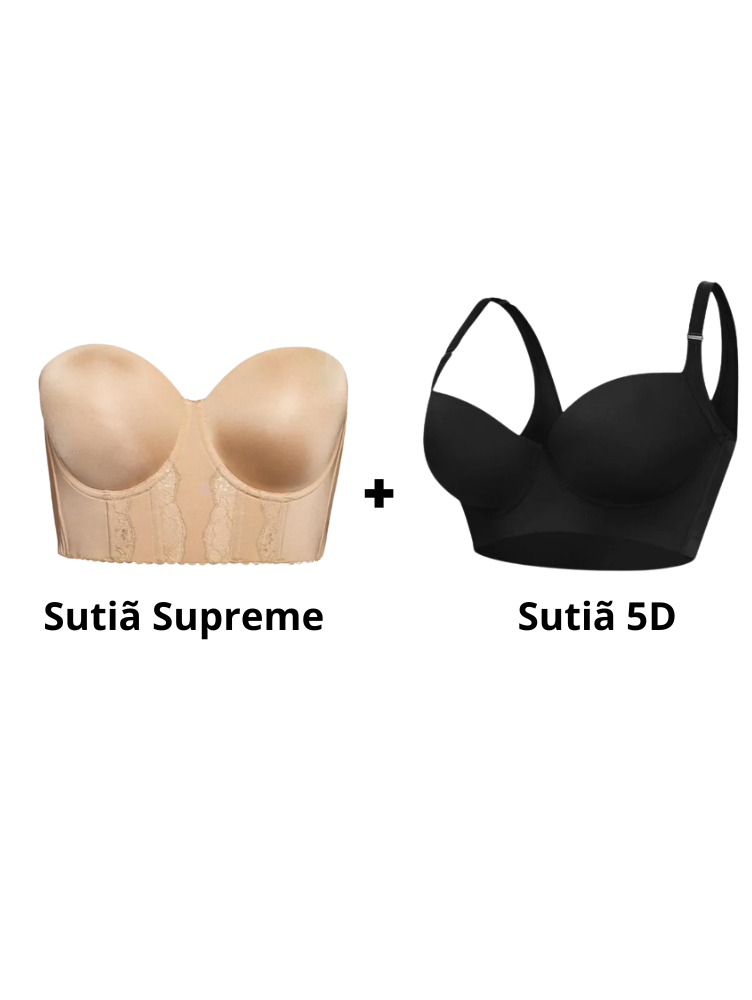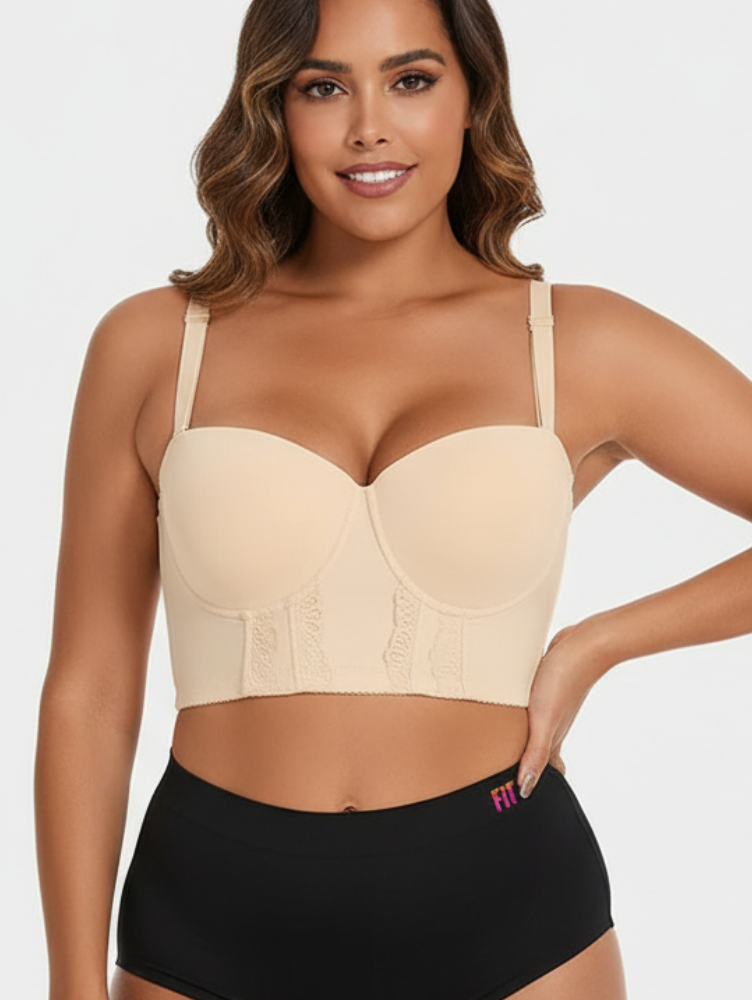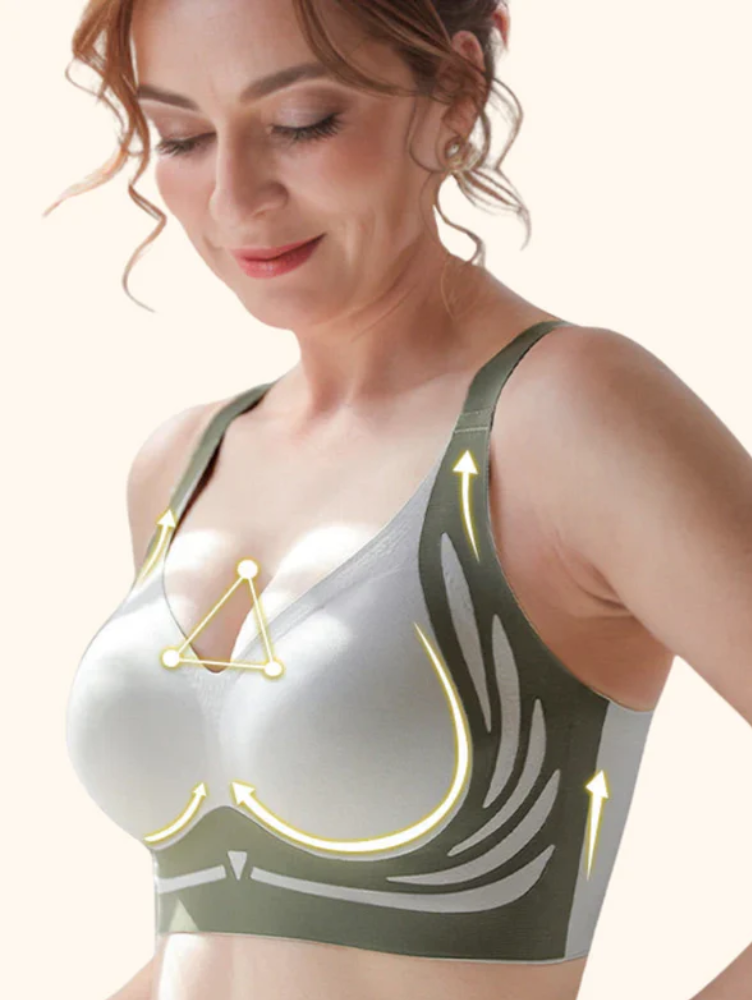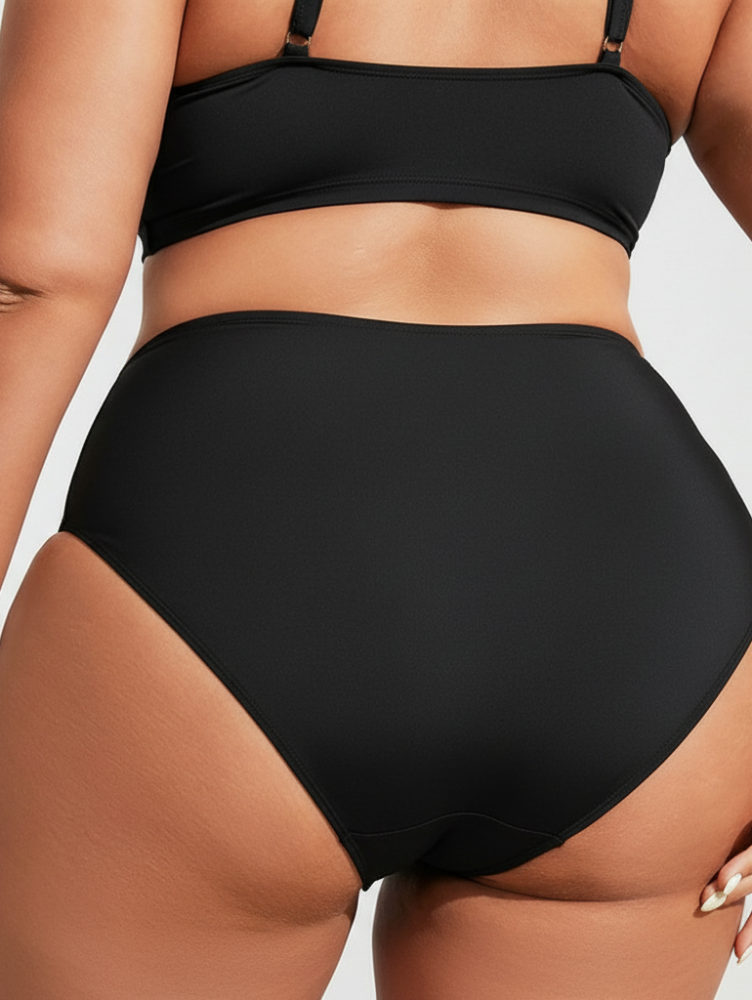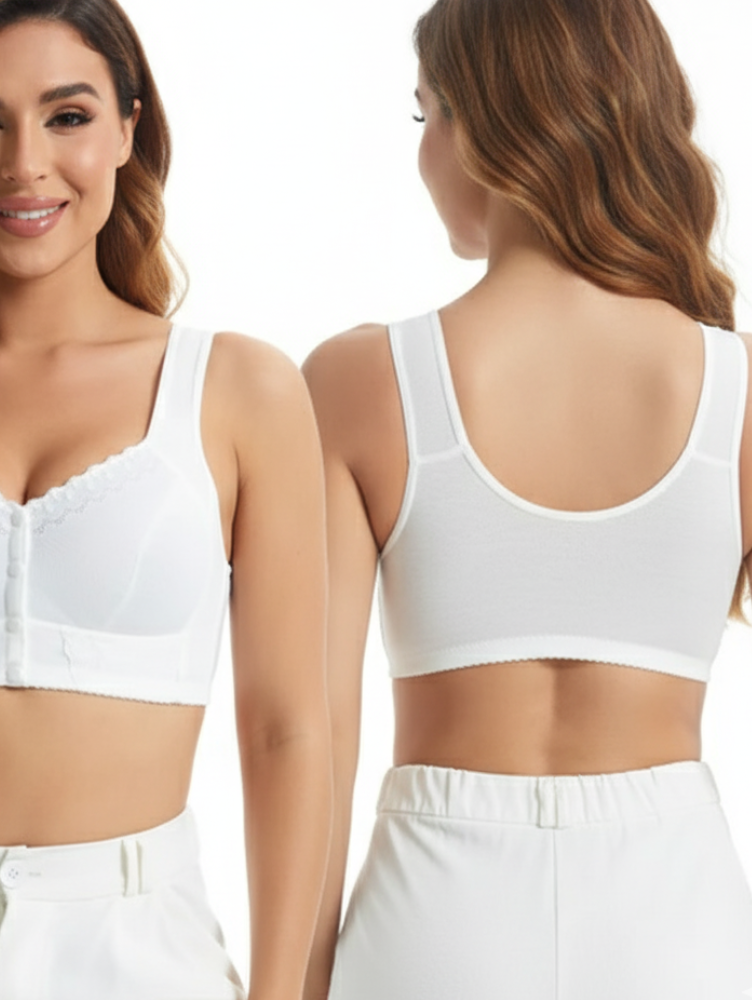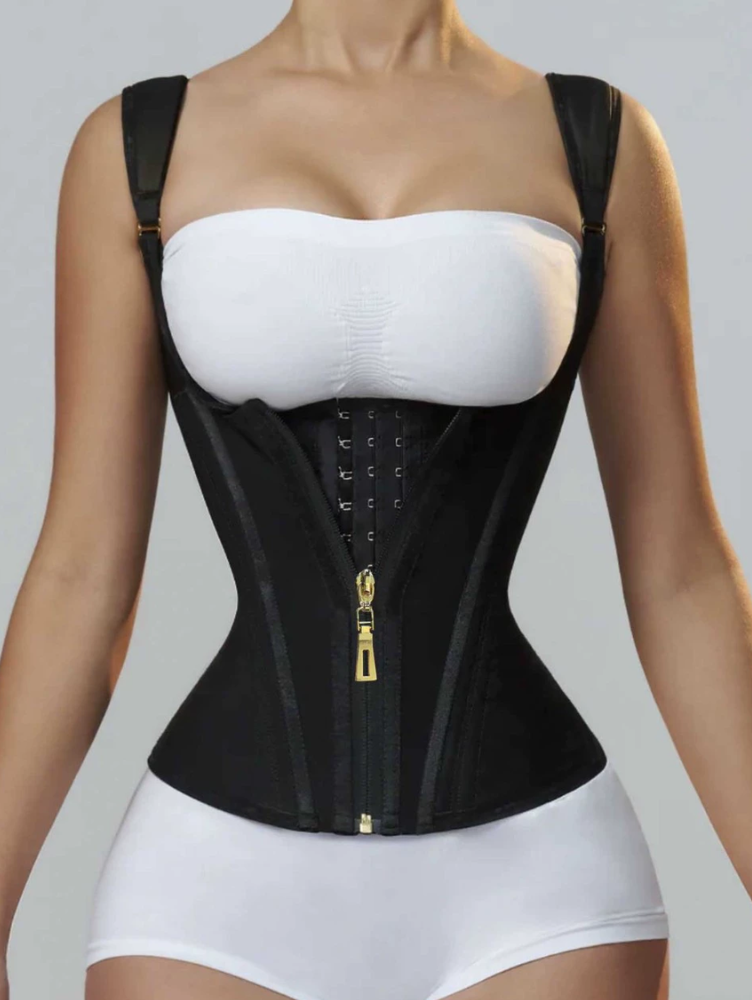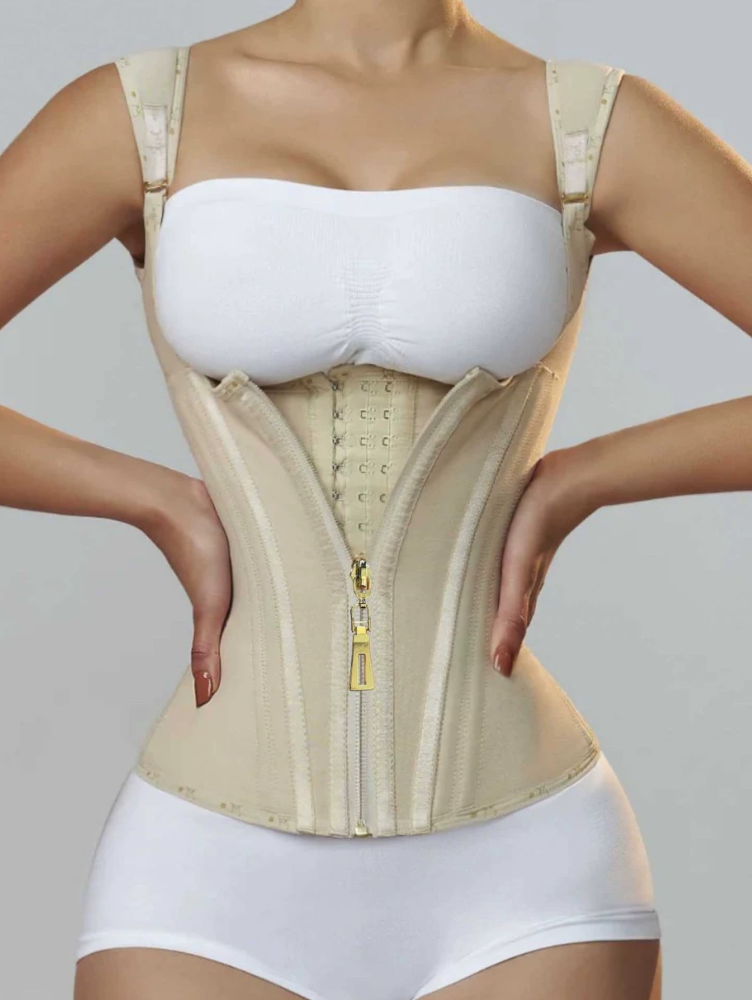Here are some tips for using Corsets:
1. What are the recommended models?
We have two types of corsets: Overbust and Underbust. Overbust is the corset that contains the bust and is ideal for better breast support, shaping, and a stylish look. Underbust is the most effective for shaping, providing a curve for breast support, and is super discreet and ideal for wearing under clothing.
2. What is the Difference Between Steel and Silicone Fins?
Steel-boned models are more effective at shaping the waist because they're more durable and malleable, made of unboned steel, ideal for slimming. Silicone models, on the other hand, offer moderate shaping effectiveness and are ideal for beginners.
3. What is the benefit of corsets?
21st-century corsets are more modern and comfortable, offering several benefits: waist shaping, bust enhancement, posture enhancement, self-esteem enhancement, and a versatile look. They help reduce diastasis recti and elevated stomach area, and suppress appetite. It truly is transformative and worth using.
4. What is recommended when using the Corset?
Perform abdominal exercises at least twice a week to strengthen the lower back and abdomen.
5. Can you wear a corset to sleep?
It is not recommended as the heart rate decreases during sleep and can cause injuries and circulation problems.
6. Can I wear a corset under my clothes?
Yes, super discreet, doesn't bother or leave marks.
7. I have a small/large torso, what is the ideal corset?
For larger torsos, we recommend longer, more elongated models. For those with smaller torsos, we recommend shorter models.
8. Is the corset made to measure?
The product is handcrafted according to the standard size chart. Measure your waist circumference, one finger above your belly button. This measurement will help you determine your ideal corset size. Order your size according to the chart.
9. Can You Wear a Corset to the Gym?
Yes, as long as you do not perform exercises that promote movement of the lower back/waist, as this can cause injuries as the corset reduces movement of the torso.
10. Difference between Corset and Bustier:
Corsets, bustiers, and corselets are garments that share similarities, but also differ in design and purpose. Here's a brief explanation of the differences between them:
Corset:
A corset is a rigidly constructed garment designed to shape the waist and torso. Traditionally, corsets were used to create a slimmer, more elegant silhouette by accentuating the waist.
They are usually tightened with ties at the back to adjust the pressure on the waist.
Corsets generally cover the area from the bust to the hips.
Corset:
A corset is similar to a stay-up, but is usually longer and can cover most of the torso, extending below the waist.
Corsets are known for providing bust support, shaping the waist, and creating an hourglass figure.
They can also be worn as fashion pieces, either under clothing or as part of a look.
Corselet:
The corselet is a garment that combines characteristics of the corset and the stay-up, often shorter than the corset, but with the same purpose of shaping the body.
Corsets can be worn as lingerie or as fashion pieces, often incorporating aesthetic details such as embroidery and lace.
Bodice:
The bodice is a similar piece to the corset, but it is usually shorter and does not have the same rigid structure.
Bustiers are more flexible and designed to provide support and shaping, but with less restriction than a corset.
They can be used as fashion pieces, and are often used as part of party outfits and evening wear.
In short, the main difference between these garments is their structure and purpose. Corsets and stays are more rigid and designed to shape the waist and torso more intensely, while corselets and bustiers are more flexible garments that also serve a shaping function, but with less restriction. Choosing between these garments depends on the desired style and the level of comfort and restriction you're trying to achieve.
Clube Mulher Portugal


Login ›
0
 Skip to content
Skip to content

